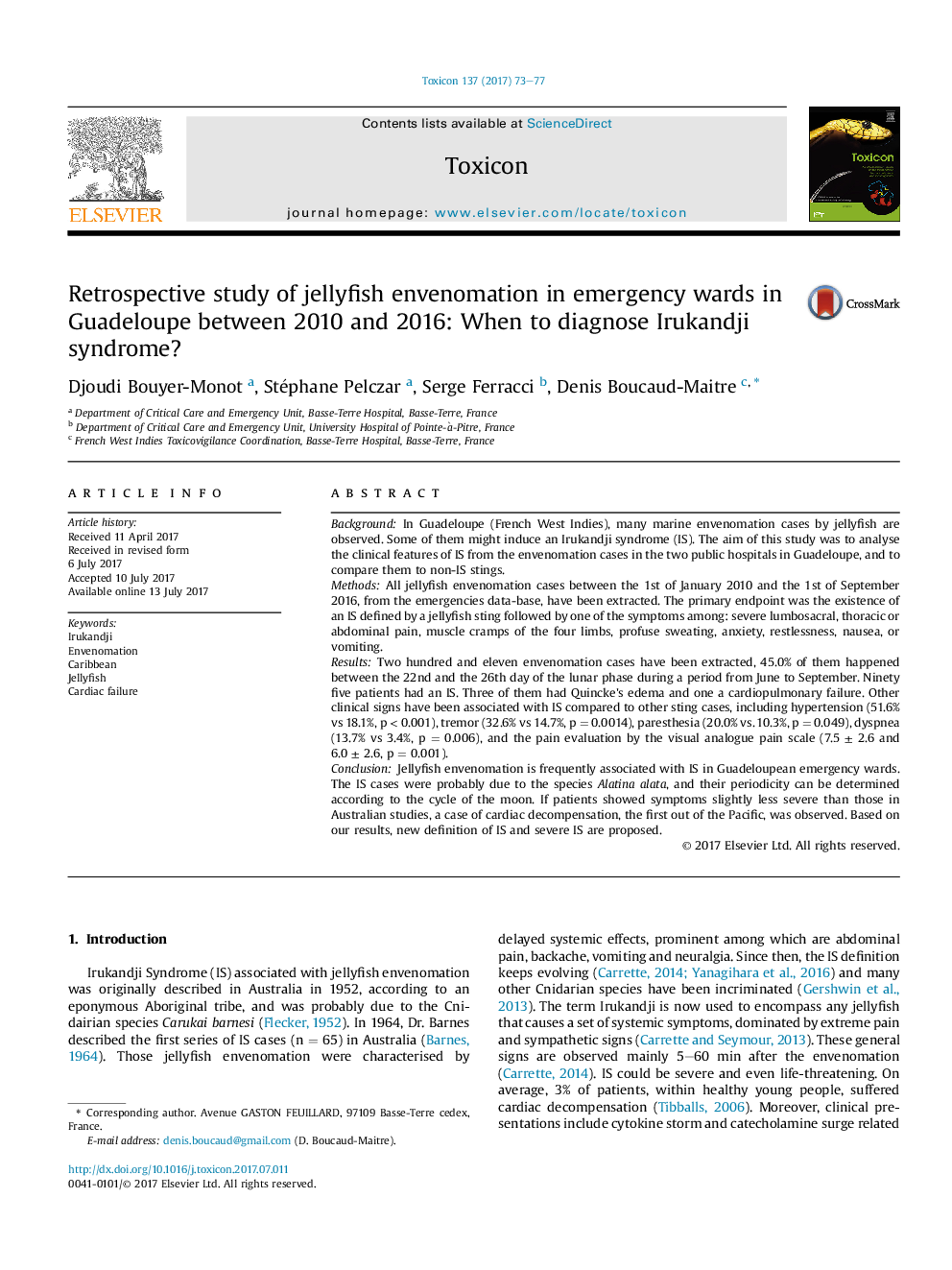| Article ID | Journal | Published Year | Pages | File Type |
|---|---|---|---|---|
| 5519282 | Toxicon | 2017 | 5 Pages |
â¢This is a retrospective case study of jellyfish envenomation in Guadeloupe (French West Indies) including 211 patients.â¢Jellyfish envenomation can be determined according to the cycle of the moon.â¢Jellyfish envenomation were frequently associated with Irukandji Syndrome (45%).â¢Symptoms were slightly less severe than those in Australia.â¢The first case of cardiac decompensation outside the Pacific was observed.
BackgroundIn Guadeloupe (French West Indies), many marine envenomation cases by jellyfish are observed. Some of them might induce an Irukandji syndrome (IS). The aim of this study was to analyse the clinical features of IS from the envenomation cases in the two public hospitals in Guadeloupe, and to compare them to non-IS stings.MethodsAll jellyfish envenomation cases between the 1st of January 2010 and the 1st of September 2016, from the emergencies data-base, have been extracted. The primary endpoint was the existence of an IS defined by a jellyfish sting followed by one of the symptoms among: severe lumbosacral, thoracic or abdominal pain, muscle cramps of the four limbs, profuse sweating, anxiety, restlessness, nausea, or vomiting.ResultsTwo hundred and eleven envenomation cases have been extracted, 45.0% of them happened between the 22nd and the 26th day of the lunar phase during a period from June to September. Ninety five patients had an IS. Three of them had Quincke's edema and one a cardiopulmonary failure. Other clinical signs have been associated with IS compared to other sting cases, including hypertension (51.6% vs 18.1%, p < 0.001), tremor (32.6% vs 14.7%, p = 0.0014), paresthesia (20.0% vs. 10.3%, p = 0.049), dyspnea (13.7% vs 3.4%, p = 0.006), and the pain evaluation by the visual analogue pain scale (7.5 ± 2.6 and 6.0 ± 2.6, p = 0.001).ConclusionJellyfish envenomation is frequently associated with IS in Guadeloupean emergency wards. The IS cases were probably due to the species Alatina alata, and their periodicity can be determined according to the cycle of the moon. If patients showed symptoms slightly less severe than those in Australian studies, a case of cardiac decompensation, the first out of the Pacific, was observed. Based on our results, new definition of IS and severe IS are proposed.
